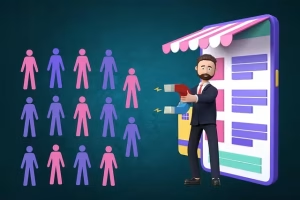In a world saturated with generic marketing messages and one-size-fits-all approaches, standing out is no longer a luxury – it’s a necessity. We’ve journeyed through mass marketing, where every customer received the same message, to segmented personalization, which offered a slightly more tailored approach. But today, the game has changed entirely. Welcome to the era of the hyper-personalized user journey, where every interaction is a unique conversation, designed specifically for you
So, what is a hyper-personalized user journey? At its core, it’s about creating custom and individualized, data-driven customer experiences that are meticulously crafted to the specific behaviors, preferences, and real-time needs of each and every customer. This isn’t just about calling you by your first name in an email; it’s about anticipating your next move, understanding your desires before you even articulate them, and delivering dynamic content that feels like it was made just for you.
Why does this level of customization matter so profoundly now? Simply put, customer expectations have skyrocketed. Today’s consumers don’t just expect personalization; they look for it and get frustrated when it’s absent. In a crowded digital landscape, a truly individualized experience isn’t just a differentiator; it’s the key to unlocking feelings of goodwill, fostering genuine satisfaction, and cultivating unquestioned customer loyalty. It’s the future of how businesses connect with their audience, transforming fleeting interactions into lasting relationships.
How Exactly Hyper-Personalization Works

At the heart of any truly hyper-personalized experience lies a sophisticated engine of data and advanced technology. It’s about moving beyond surface-level insights to a deep, dynamic understanding of each individual customer.
A. Data is King (and Queen):
The foundation of hyper-personalization is robust and granular data collection. This isn’t just about knowing a customer’s name; it’s about capturing a mosaic of insights that paint a complete picture of their digital footprint and preferences.
- 1. Data Collection: Imagine gathering every piece of digital breadcrumb a customer leaves behind. This includes their Browse behavior (what pages they visit, how long they stay, what they click), their purchase history (not just what they bought, but when, how often, and at what price point), their social media interactions (brand mentions, interests expressed), real-time actions (items added to cart, search queries), location data (if permission is granted, this can inform localized offers), device usage (mobile vs. desktop), and even contextual factors like the weather or time of day, which can influence immediate needs. For instance, a coffee shop might offer a hot latte special on a cold, rainy morning based on real-time weather data and a customer’s location.
- 2. Unified Customer View: Collecting data is one thing; making sense of it is another. The critical step here is creating a unified customer view, often referred to as a “single customer view.” This involves stitching together all the disparate pieces of data from every touchpoint – your website, mobile app, email campaigns, customer service interactions, and even in-store purchases – into one comprehensive, accessible profile. Without this holistic view, personalization efforts remain fragmented and less effective. Imagine a customer Browse a product on your website, then asking about it on live chat, and finally purchasing it in-store. A unified view ensures that each interaction builds on the last, providing a seamless and increasingly personalized journey.
B. The Role of Advanced Technologies:
The sheer volume and complexity of data required for hyper-personalization necessitate powerful technological infrastructure. These are the tools that process, analyze, and act upon the data in real time.
- 1. Artificial Intelligence (AI): AI is the brain behind hyper-personalization. It powers the analysis of vast datasets, identifying patterns and making sense of complex customer behaviors. AI algorithms can detect subtle correlations that humans would miss, enabling sophisticated decision-making and dynamic adjustments to the user experience.
- 2. Machine Learning (ML): A subset of AI, Machine Learning is crucial because it enables systems to learn from data without being explicitly programmed. ML algorithms can identify trends in customer preferences, predict future actions (e.g., likelihood to purchase, churn risk), and continually refine personalization strategies based on new data. This iterative learning is what makes hyper-personalization so adaptive and effective over time.
- 3. Real-time Data Analytics: The ability to process and act on data as it happens is a defining characteristic of hyper-personalization. This means that if a customer abandons a shopping cart, a personalized reminder or offer can be sent almost instantaneously, rather than hours later. Real-time analytics ensures that the customer’s current intent and context are always considered.
- 4. Predictive Analytics: Building on ML, predictive analytics anticipates customer needs before they are explicitly expressed. By analyzing past behavior and identifying patterns, systems can forecast what a customer might want next. For example, if a customer consistently buys a particular brand of pet food every month, predictive analytics might trigger a reminder or a discount offer just before their usual reorder time, anticipating their need.
Key Characteristics of a Hyper-Personalized User Journey

A truly hyper-personalized user journey isn’t just a collection of features; it’s a fundamental shift in how businesses interact with their customers. Several key characteristics define this advanced approach:
A. Individualized Experiences at Scale:
This is the holy grail of hyper-personalization. It moves beyond segmenting customers into broad groups (e.g., “new customers,” “high spenders”) to treating each customer as an individual. This means tailoring content, recommendations, and interactions specifically for them, even when dealing with millions of customers. The goal is a “segment of one” where every interaction feels uniquely crafted.
B. Dynamic and Adaptive Content:
Unlike static content that remains the same for all users, hyper-personalized content is dynamic. It changes in real-time based on the user’s current context, behaviors, and preferences. Imagine a homepage that completely reconfigures itself as a user browses, highlighting different products or articles based on their latest clicks and expressed interests. This extends to email content, app interfaces, and even in-store displays.
C. Omnichannel Consistency:
Customers interact with brands across a multitude of channels – website, mobile app, email, social media, customer service, and even physical stores. A hyper-personalized journey ensures a seamless and tailored experience across all these touchpoints. If a customer begins a purchase on their desktop and later switches to their mobile app, the journey continues without interruption, with their preferences and progress recognized and maintained. This cohesive experience builds trust and reduces friction.
D. Contextual Relevance:
Hyper-personalization excels at delivering the right message at the right time and place. This involves understanding the context of the customer’s interaction. Factors like their location, the device they’re using, the time of day, and even external events (like a major sports game or a holiday) can influence what is most relevant to them. A coffee shop, for instance, might send a push notification with a discount for a cold brew to a customer nearby on a hot day.
E. Predictive and Proactive:
This characteristic is where hyper-personalization truly shines. Rather than simply reacting to past behavior, it uses predictive analytics to anticipate customer needs and proactively shape the next step in their journey. This could mean recommending a product they’ll likely need before they search for it, offering proactive customer support based on potential issues, or even suggesting content that aligns with their evolving interests. It’s about staying one step ahead, demonstrating a deep understanding of the customer’s unstated needs.
Benefits of Implementing Hyper-Personalization

Implementing a hyper-personalized user journey isn’t just a trend; it’s a strategic imperative that delivers tangible and significant benefits for businesses of all sizes.
A. Enhanced Customer Engagement:
When customers receive content, offers, or support that is precisely relevant to their individual needs and interests, they are far more likely to engage. This leads to deeper interactions, increased time spent with your brand, and a more meaningful connection. Imagine a retail site that instantly suggests accessories perfectly matching an item you just added to your cart – that’s engaging!
B. Increased Conversion Rates:
By delivering highly relevant product recommendations, tailored offers, and personalized calls to action, businesses can significantly boost their conversion rates. Customers are more inclined to make a purchase when they feel understood and are presented with exactly what they’re looking for, or even what they didn’t know they needed. Studies consistently show that personalized calls to action convert at a much higher rate than generic ones.
C. Improved Customer Satisfaction and Loyalty:
Feeling truly understood and valued by a brand fosters immense customer satisfaction. When interactions are seamless, relevant, and anticipate needs, customers develop a strong emotional connection. This leads to increased loyalty, as they are less likely to seek alternatives when their current experience consistently exceeds expectations. Think of it as a trusted friend who always knows what you like.
D. Higher Customer Lifetime Value (CLTV):
Loyal and satisfied customers are more likely to make repeat purchases, try new products, and spend more over their relationship with your brand. Hyper-personalization drives this by continually reinforcing the value proposition and making every interaction count, ultimately increasing the long-term revenue generated from each customer.
E. Optimized Marketing Spend:
Generic, broad-stroke marketing can be incredibly inefficient, wasting resources on irrelevant audiences. Hyper-personalization, conversely, ensures that your marketing efforts are highly targeted and impactful. By delivering the right message to the right person at the right time, you reduce wasted ad spend, improve campaign performance, and achieve a higher return on investment (ROI).
F. Competitive Advantage:
In today’s crowded market, a superior customer experience is a powerful differentiator. Businesses that excel at hyper-personalization stand out from competitors who are still relying on less sophisticated methods. This creates a distinct advantage, attracting new customers and retaining existing ones in a fiercely competitive environment.
Real-World Examples and Success Stories

The power of hyper-personalization is best illustrated through the success of companies that have mastered it. These examples demonstrate how deeply individualized experiences translate into significant business outcomes.
A. Retail & E-commerce:
- Amazon: Perhaps the quintessential example. Amazon’s sophisticated recommendation engine analyzes Browse history, purchase patterns, and even items viewed by similar users to suggest products that are incredibly relevant. This dynamic personalization is a core reason for its unparalleled success, driving a significant portion of its sales. Their “Customers who viewed this item also viewed…” and “Frequently bought together” sections are classic hyper-personalization in action.
- Shopify: While a platform, many Shopify stores leverage apps and integrations for dynamic product recommendations, personalized email marketing triggered by cart abandonment, and tailored landing pages based on referral source or search queries.
B. Media & Entertainment:
- Netflix: Netflix revolutionized entertainment by providing highly personalized content suggestions. Its algorithms learn from your viewing history, ratings, and even the time of day you watch, to recommend movies and shows you’re highly likely to enjoy. This deep understanding of individual taste keeps subscribers engaged and reduces churn.
- Spotify: Similar to Netflix, Spotify curates personalized playlists (“Discover Weekly,” “Daily Mixes”) and recommends new artists based on your listening habits, genre preferences, and even mood. This tailored musical journey fosters strong user loyalty.
C. Travel & Hospitality:
- EasyJet: The airline adapted its website based on user search keywords and paid ad clicks. If a user clicked on an ad for “spa retreats,” they would be taken to a personalized landing page with imagery and copy specifically about spa holidays, rather than a generic booking page. This led to a significant increase in sign-ups.
- Hilton Honors: Loyalty programs in hospitality leverage hyper-personalization by offering tailored upgrades, special offers, and even personalized welcome messages based on a guest’s past stays, preferences (e.g., high floor, king-size bed), and loyalty tier.
D. Financial Services:
- Cleo (AI Finance Assistant): This app uses AI to analyze your spending habits, income, and bills. It then provides personalized financial advice, proactive warnings about potential overdrafts, and even nudges to help you save money – all tailored to your unique financial situation.
- Banks & Credit Card Companies: Many now offer personalized insights into spending habits, tailored budgeting tools, and proactive alerts for unusual activity, making financial management feel more intuitive and supportive.
E. Telecommunications:
- Telecom companies are increasingly using hyper-personalization to recommend data plans, device upgrades, and value-added services based on a customer’s usage patterns, call history, and expressed interests. For example, a customer who frequently streams video might receive an offer for an unlimited data plan.
Challenges and Considerations for Hyper-Personalization
While the benefits of hyper-personalization are compelling, its implementation is not without its hurdles. Businesses must navigate several critical challenges to ensure success and maintain customer trust.
A. Data Privacy and Security:
This is perhaps the most significant challenge. Hyper-personalization relies on extensive data collection, which inherently raises concerns about data privacy and security. Customers are increasingly aware of their data rights and are wary of companies that seem to know too much.
- Transparency in data collection and usage: Businesses must be upfront and clear about what data they collect, why they collect it, and how they use it. Vague privacy policies erode trust.
- Compliance with regulations (GDPR, CCPA): Adhering to strict data protection regulations like the General Data Protection Regulation (GDPR) in Europe and the California Consumer Privacy Act (CCPA) in the US is non-negotiable. Non-compliance can lead to hefty fines and severe reputational damage.
- Avoiding the “creepy” factor: There’s a fine line between helpful personalization and feeling intrusive. Bombarding customers with overly specific or seemingly unsolicited offers can make them feel monitored and uncomfortable, leading to disengagement or even abandonment.
B. Data Silos and Integration:
Many organizations suffer from data silos, where customer information is fragmented across various departments and systems (e.g., CRM, marketing automation, sales, customer service).
- The difficulty of unifying data from disparate sources: Integrating these diverse data sources into a single, comprehensive customer view is a complex technical challenge. Inconsistent data formats, legacy systems, and a lack of standardized data governance can make this a significant hurdle.
C. Technical Complexity:
Implementing a truly hyper-personalized system requires robust technological infrastructure and specialized expertise.
- Implementing and maintaining advanced AI/ML systems: These systems are not plug-and-play. They require significant investment in development, ongoing maintenance, and the expertise of data scientists and machine learning engineers.
- Scalability: Ensuring that personalization efforts can scale as the customer base grows and data volume increases is another technical challenge.
D. Resource Investment:
Hyper-personalization is not a low-cost endeavor.
- Time, money, and expertise required: Businesses need to allocate substantial resources – financial investment in technology, time for implementation and refinement, and access to skilled personnel (data analysts, AI/ML engineers, UX designers). Small businesses, in particular, may find this a daunting barrier.
E. Ethical Considerations:
Beyond compliance, businesses must consider the ethical implications of their personalization strategies.
- Avoiding “creepy” personalization and ensuring user control: It’s crucial to respect customer boundaries. Giving users control over their data and preferences (e.g., opting out of certain types of personalization) can build trust and prevent negative reactions. The goal is to enhance the user experience, not make customers feel exposed or manipulated.
Best Practices for Crafting a Hyper-Personalized User Journey

Successfully implementing a hyper-personalized user journey requires a strategic and methodical approach. These best practices provide a roadmap for businesses aiming to unlock the full potential of this powerful strategy.
A. Start with a Deep Customer Understanding:
Before you can personalize, you must understand who you’re personalizing for.
- Conduct thorough customer research: Go beyond demographics. Understand their motivations, pain points, aspirations, and how they interact with your brand and industry.
- Develop detailed buyer personas: Create rich, data-driven profiles of your ideal customer segments. This helps you visualize and empathize with their needs and behaviors.
B. Map the Customer Journey:
To personalize effectively, you need to see the world through your customer’s eyes.
- Identify all key touchpoints: From initial awareness to post-purchase support, map every interaction a customer has with your brand across all channels. This reveals opportunities for personalization.
C. Implement Robust Data Infrastructure:
A strong data foundation is non-negotiable.
- Customer Data Platforms (CDPs) for a unified view: Invest in a CDP, a specialized software that collects and unifies customer data from various sources into a single, persistent, and accessible profile. This is crucial for creating that essential “single customer view” and enabling real-time personalization.
- Data Governance: Establish clear policies and procedures for data collection, storage, usage, and security to ensure data integrity and compliance.
D. Leverage AI and Machine Learning:
These technologies are the engines of hyper-personalization.
- For analysis, prediction, and automation: Use AI to uncover hidden patterns in data, predict future behavior, and automate the delivery of personalized content and offers. This frees up human resources for more strategic tasks.
E. Adopt an Omnichannel Strategy:
Ensure a consistent and seamless experience across all customer interaction points.
- Ensure consistency across all channels: Whether a customer is on your website, using your app, reading an email, or speaking to customer service, their personalized journey should flow seamlessly, with their preferences and history recognized.
F. Focus on High-Value Use Cases First:
Don’t try to personalize everything at once.
- Prioritize areas with the greatest impact: Identify specific parts of the customer journey where hyper-personalization can deliver the most significant benefits, such as product recommendations, cart abandonment recovery, or onboarding. Start small, prove value, and then expand.
G. Balance Automation with Human Touch:
While technology is powerful, human connection still matters.
- Where appropriate: Identify moments in the customer journey where a human touch can enhance the personalized experience (e.g., personalized follow-up from a sales representative after a significant purchase, or a customer service agent who has access to the full customer history).
H. Prioritize Data Privacy and Transparency:
Building and maintaining customer trust is paramount.
- Build customer trust: Be transparent about your data practices, give customers control over their data, and ensure strict compliance with all relevant privacy regulations. Communicate the value of personalization to the customer (e.g., “We use your preferences to give you better recommendations”).
I. Continuously Experiment, Measure, and Optimize:
Hyper-personalization is not a one-time project; it’s an ongoing process of refinement.
- Hyper-personalization is an ongoing process: Regularly analyze the performance of your personalized experiences. A/B test different approaches, gather customer feedback, and use insights to continuously optimize and improve your strategies. The customer journey is dynamic, and your personalization efforts should be too.
The Future of Hyper-Personalization
The landscape of customer experience is constantly evolving, and hyper-personalization is at the forefront of this transformation. Looking ahead, we can anticipate several key trends that will shape its future.
A. Increased Sophistication of AI and ML:
The algorithms underpinning hyper-personalization will become even more powerful and nuanced.
- Even more nuanced and predictive capabilities: AI will be able to process increasingly complex data sets, understand subtle cues in customer behavior, and predict needs with even greater accuracy. Imagine AI not just recommending products, but also anticipating emotional states and tailoring interactions accordingly. Generative AI will also play a role in creating highly customized and unique content on the fly.
B. Greater Emphasis on Ethical AI:
As AI becomes more pervasive, the ethical implications of its use will come under closer scrutiny.
- Ensuring fair and unbiased personalization: Businesses will need to proactively address concerns about algorithmic bias, ensuring that personalization strategies do not inadvertently discriminate or create filter bubbles that limit customer exposure to new ideas or products. Transparency and explainability in AI will become more important.
C. Integration with Emerging Technologies:
Hyper-personalization will extend beyond traditional digital channels.
- Metaverse, IoT, etc.: As new technologies like the Metaverse and the Internet of Things (IoT) become more mainstream, hyper-personalization will find new frontiers. Imagine a personalized shopping experience in a virtual store, or smart home devices anticipating your needs based on your routines and preferences. The line between digital and physical personalized experiences will blur further.
D. The Expectation, Not the Exception:
What is currently considered “hyper-personalized” will eventually become the baseline expectation for customers.
- Hyper-personalization becoming the default for successful businesses: As customers become accustomed to highly tailored experiences from leading brands, they will demand the same level of personalization from all businesses, regardless of size. This will pressure even smaller players to adopt more sophisticated personalization strategies to remain competitive.
Conclusion: The Imperative for Small Businesses
The concept of a hyper-personalized user journey might sound like something only tech giants with limitless resources can achieve. However, in today’s digital landscape, it’s not merely an aspiration but an imperative, even for small businesses.
A. Recap of Key Benefits:
Let’s reiterate why hyper-personalization is so crucial. It’s the key to enhanced customer engagement, leading to significantly increased conversion rates. It fosters profound customer satisfaction and loyalty, translating into a higher customer lifetime value. Furthermore, it allows for optimized marketing spend by targeting your efforts precisely, ultimately providing a powerful competitive advantage in a crowded market. These benefits are not exclusive to large corporations; they are the bedrock of sustainable growth for any business.
B. Actionable Advice for Small Businesses:
While the scale may differ, the principles remain the same. Small businesses can absolutely start implementing hyper-personalization principles effectively.
- Focus on collecting relevant first-party data: Start with the data you can easily access – website analytics, purchase history from your POS system, email engagement metrics. Every interaction is a data point.
- Utilize readily available tools for segmentation and basic automation: Many CRM systems, email marketing platforms, and e-commerce platforms offer built-in segmentation capabilities. Start by segmenting your customers into smaller, more homogeneous groups and automating personalized messages based on their behavior (e.g., a welcome email series for new subscribers, a discount for repeat customers after a certain number of purchases, or abandoned cart reminders).
- Prioritize customer feedback and iterative improvements: Listen to your customers. Solicit feedback, analyze reviews, and observe how they interact with your personalized efforts. Start small, test, learn, and then refine your approach. It’s an ongoing journey of improvement.
C. The Path to Lasting Customer Relationships:
For small businesses, where every customer relationship truly counts, hyper-personalization is not just about sales; it’s about building genuine, lasting connections. By demonstrating that you understand and value each customer as an individual, you create a loyal community that not only buys from you repeatedly but also becomes your most enthusiastic advocate. In a world craving authentic connections, a hyper-personalized user journey is your most powerful tool to not only meet but exceed customer expectations, forging relationships that stand the test of time.






